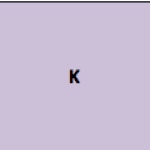Information
-
Audit Title
-
Document No.
-
Client / Site
-
Conducted on
-
Prepared by
-
Location
-
Personnel
Structure, Function, and Information Processing
-
All living things are made up of cells, which are the smallest unit that can be said to be alive.
-
An organism may consist of one single cell, or many different numbers and types of cells.
-
Organisms reproduce either sexually or asexually.
-
Genetic factors and local conditions affect the size of the adult plant.
-
Animals engage in characteristic behaviors that increase the odds of reproduction.
-
Each sense receptor responds to different inputs, transmitting them as signals that travel along nerve cells to the brain.
-
The signals are then processed in the brain resulting in immediate behaviors or memories. Changes in the structure and functioning of nerve cells allow combined inputs to be stored as memories for long periods of time.
-
Unicellular and multicellular organisms need food, water, a way to dispose of waste, and an environemnt in which to live.
-
Within cells, special structures are responsible for particular functions, and cell membranes form the boundary that controls what enters and leaves the cell.
-
Multicellular organisms-body is a system of multiple interacting subsystems.
-
Plants reproduce in a variety of ways, sometimes depending on animal behavior and specialized features for reproduction.
-
Plant growth can continue throughout the plant's life through production of plant matter in photosynthesis.
Interdependent Relations in Ecosystems
-
Organisms and populations of organisms are dependent on their environmental interaction both with other living things and with nonliving factors. Growth of organisms and population increases are limited by access to resources in any ecosystem, organisms, and populations with similar requirements for food, water, oxygen, or other resources, access to which consequently constrain their growth and reproduction.
-
Similarly, predatory interactions may reduce number of organisms or eliminate whole populations of organisms. Mutually beneficial interactions, in contrast, may become so independent that each organism requires the other for survival. Although the species involved in these competitive, predatory, and mutally beneficial interactions vary across ecosystems, the patterns of interactions of organisms with their with their environments, both living and nonliving are shared.
-
Biodiversity describes the variety of species found in Earth's terrestial and oceanic ecosystems. The completeness or integrity of an ecosystem's biodiversity is often used as a measure of its health.
-
Groups may form because of genetic relatedness, physical proximity, or other recognition mechanisms. They engage in a variety of signaling behaviors to maintain the group's integrity or to warn of threats. Groups often dissolve if they no longer function to meet individual needs, if dominant members lose their place, or if other key members are removed from the gropu through death, predation, or exclusion by other members.
-
Biodiversity is the wide range of existing life forms that have adapted to the variety of conditions on Earth from terrestrial to marine ecosystems. Biodiversity includes genetic variation within species, in addition to species variation in different habitats and ecosystems types.
-
Changes in biodiversity can influence humans' resources such as food, energy, and medicines as well as ecosystem services that humans rely on.
Matter and Energy in Organisms and Ecosystems
-
Plants, algae, and many microorganisms use the energy from light to make sugars from carbon dioxide and water through photosynthesis, which also releases oxygen.
-
Animals obtain food from plants or other animals.
-
Within individual organisms food moves through a series of chemical reactions in which it is broken down and reaaranged to form new molecules to support growth or to release energy.
-
In most animals and plants, oxygen reacts with carbon-containing molecules to provide energy and produce carbon-dioxide; anerobic bacteriaachieve their energy needs in other chemical processes that do not need oxygen.
-
Food webs are models that demonstrate how matter and energy transferred between producers, consumers, and decomposers as these three groups interact, primarily for food, within an ecosystem. Transfers of matter into and out of the physical environment occurs at every level. Decomposers recycle nutrients from dead plant or animal matter back to the soil in terrestrial environments. The atoms that make up the organisms in an ecosystem are cycled repeatedly between the living and nonliving parts of the ecosystem.
-
Ecosystems are dynamic in nature; their characteristics can vary over time. Disruptions to any physical or biological component of an ecosystem can lead to shifts in all its populations.
Growth, Development, and Reproduction of Organisms
-
Genes are located in the chromosomes of cells, each chromosome pair containing two variants of each of many distinct genes.
-
Each distinct gene chiefly controls the production of specific proteins, which in turn affects individual traits of the individual.
-
In sexually reproducing organisms, each parent contributes half of the genes acquired by the offspring. Individuals have two of each chromosome and hence two alleles of each gene, one acquired frome ach parent. These versions may be identical or may differ from each other.
-
In addition to variations that arise froms sexual reproduction, genetic information can be altered because of mutations. Though rare, mutations may result in changes to the structure and function of proteins. Some changes are beneficial, others harmful and some neutral to the organism.
-
Changes (mutations) to genes can result in changes to protein, which can affect the structure and function of organisms and thereby change the traits.
-
Sexual reproduction provides for transmission of genetic information to offspring through egg and sperm cells. These cells which contain only one chromosome of each parent's chromosome pair, unite to form a new individual (offspring). Thus offspring possess one instance of each parent's chromosome pair. Variation of inherited traits between parents and offspring arise from genetic differences inherited or from mutations.
-
In artificial selection, humans have the capacity to influence certain characteristics of organisms by selective breeding. One can choose desired parental traits determined by genes, which are then passed on to offspring.
Natural Selection and Adaptation
-
Fossils are mineral replacements, preserved remains, or traces of organisms that lived in the past. Thousands of layers of sedimentary rock not only provide evidence of the history of the Earth but also of changes in organisms whose fossils remains have been found in those layers.
-
The collection of fossils and their placement in chronological order is known as the fossil record. It documents the existence, diversity, extinction, and change of many life forms throughout the history of life on Earth. Because of the conditions necessary for their preservatio, not all types of organisms that existed in the past have left fossils that can be retrieved.
-
Anatomical similarities and differences between various organisms lving today, and between them and organisms in the fossil record enable the reconstruction of evolutionary history and the inferences of lines and evolutionary descent.
-
Comparisons of the embryological development of different species also reveals similarity that show relationships not evident in the fully-formed anatomy.
-
Genetic variation among individuals in a population give some individuals an advantage in surviving and reproducing in their environment. This is known as natural selection. It leads to the predominance of certain traits in a population, and the suppression of theirs.
-
Adaptation by natural selection acting over generations is one important process by which species change over time in response to changes in environmental conditions.
-
Traits that support successful survival and reproduction in the new environment become more common; those that do not become less common. Thuse the distribution of traits in a population changes.
-
In separated populations with different conditions the changes can be large enough that the population, provided they remain separated evolve to be separate species.









